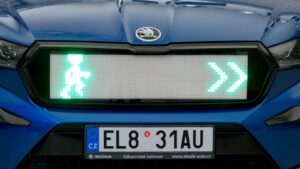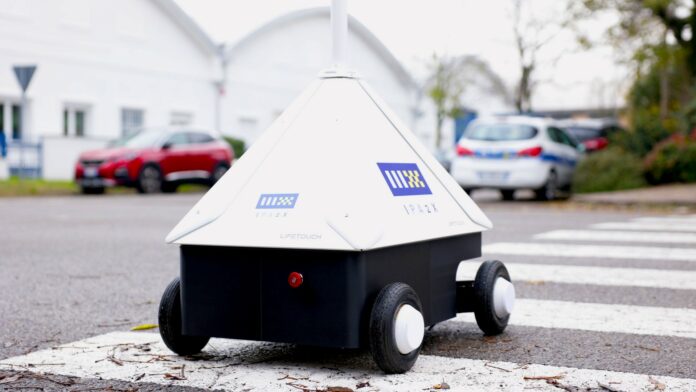Technology has yet to reveal everything that can be brought into everyday life, which can be seen in the automotive industry too.
To document the above statement, we will look at two development laboratories, Hyundai Mobis, and Škoda Auto.
Rollable Screen from Hyundai Mobis
This technical element is coming to the world’s automotive equipment for the first time. The benefit is that it takes up a minimum of space on the dashboard (depth of 12 cm – about 4.7 inches) and brings the opportunity to change and improve the interior design significantly. The screen rolls up and down – if the car user wants to get only basic information about the driving parameters, it uses one-third of the display area, two-thirds is used to display navigation maps and data, the full-screen mode with a 16:9 aspect ratio will be used to watch videos when the car is parked or when charging the electric vehicle.

The rollable screen is installed instead of the navigation system. Its resolution is QHD or higher. It can also be used as entertainment for the rear passengers. Hyundai Mobis says it can produce screens with a diagonal of 30 inches or more.

Safer Urban Mobility
ŠKODA AUTO is working on an innovative technology project as part of a broader test under the Urban Mobility Initiative of the European Institute of Innovation and Technology (EIT). They want to provide communication between cars and pedestrians. The Enyaq iV car LED cooler grill displays various symbols, including green arrows, a green figure, a warning triangle, and a red triangle with a cross. If a car is approaching a crossing, it will inform people that it has detected them. It will stop and use the green arrows to show them they can cross. When pedestrians pass, and the car needs to start again, it sends a signal: “Stop, do not cross the road.” If a vehicle approaching a crossing cannot stop for some reason, it will signal: “Attention, I cannot brake, do not cross the road.”

The robotic rover IPA2X is also part of the development and testing. Experts from the Institute of Informatics, Robotics and Cybernetics of the Czech Technical University in Prague, the Technical University of Munich and Škoda Auto, and other companies worked on this innovation. The development results in a robot more than two meters high, which looks like a mobile traffic light. It moves into the center of the pedestrian crossing, displaying a green light that pedestrians can pass. The robot constantly monitors its surroundings to detect that a car is approaching the pedestrian crossing. The robot displays information for pedestrians and alerts for coming cars – it shows a stop sign to approaching drivers.

At the same time, it sends a warning to the vehicle displayed as an animation on the infotainment screen. When pedestrians cross the road, the robot returns to the curb, the sign on the car dashboard disappears, and the driver can continue the journey. After further development of the robot, audible warnings should also be available. Testing is expected to end in 2024, and robots could appear in the streets as early as 2025.

Text: Peter Stano, photo: Hyundai Mobis, Škoda Auto













